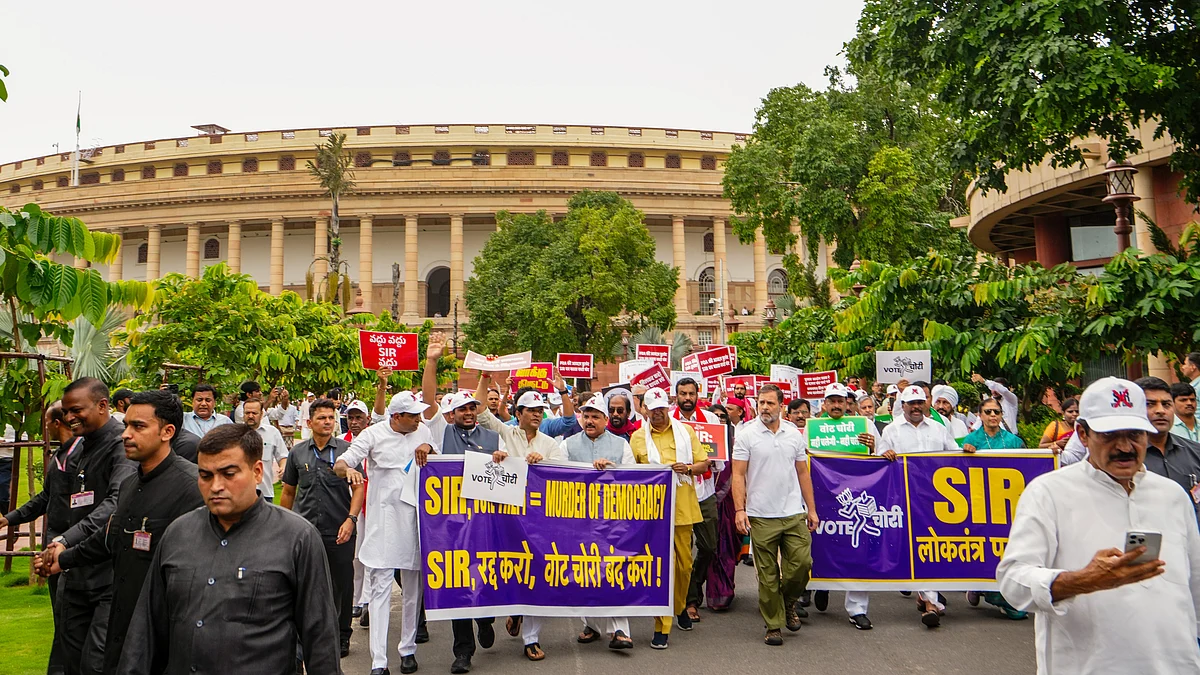On SIR, is Election Commission being too clever by half?
ECI has not denied flaws in draft electoral rolls published on 1 August after first phase of SIR between 25 June and 25 July

The Election Commission of India in an affidavit on Sunday, 10 August, has informed the Supreme Court that no rule warrants the commission to produce a list of voters dropped from the electoral rolls owing to death, duplication, or not being found at given addresses. It has also claimed that it is not bound to cite reasons for dropping voters from the draft electoral roll.
Over the weekend, the ECI also changed the draft electoral roll from machine-readable format to non-machine-readable format on the voters' services portal. The original PDFs were replaced with scanned copies of those PDFs, rendering them difficult, if not entirely unfit, for digital search.
Bihar's chief electoral officer responded by denying any change in the list, forcing Scroll.in, which reported the abrupt change in format, to call the CEO’s bluff. It was the format and not the list which had changed, the portal pointed out. This time, there has been radio silence from the CEO.
Abhishek from AltNews posted the following on X: “Chief Electoral Officer of Bihar is MISLEADING people. Election Commission has indeed removed the SIR Draft 2025 original PDF files from the VOTERS' SERVICES PORTAL and replaced them with scanned copies of the original PDFs in which search function doesn't work.”
AltNews founder Pratik Sinha, however, managed to find a way ‘to add a text layer to the Bihar SIR files that have been converted by ECI from digital to unreadable-by-machine (format)’. Sinha wondered what could have prompted the ECI to do so in this digital age, and with all the hype around ‘Digital India’.
Also Read: Bihar’s 65-lakh question
On Monday, 11 August, Reporters’ Collective, an independent group of investigative journalists, too claimed to have cracked the list with the help of independent data analysts. Matching the draft electoral roll for the Valmikinagar assembly constituency in Bihar, the collective immediately found more than 1,000 perfect matches of voters in adjacent Uttar Pradesh. Names, ages, and listed relatives (mandatory fields in the ECI database) were exactly the same across the databases of the two states.
“Their addresses were, however, different. In thousands of other cases, the voter’s name or that of the relatives had been changed by altering 1-3 letters in the spelling. In some cases, ages had been altered by 1-4 years across the two databases and the rest of the credentials matched,” the report claimed.
Written queries to the ECI headquarters in Delhi and its Bihar office remained unacknowledged. Neither of them responded. ECI public relations officer Ashok Goyal told the Collective on phone, “You must keep in mind that whatever discrepancies are there, the claims and objections period is still on.”
The ECI, with the government’s resources at its command, should have found it easy to debunk the investigation. For example, the ECI could, within hours, have produced Chhedi Ram, a voter in Valmikinagar in Bihar. Aged 45, his relative is named Sukh Ram, and his EPIC number is UIM3397304.
It could also have produced another Chhedi Ram across the border in Uttar Pradesh, also aged 45 and with a relative named Sukh Ram. The ECI could have cleared the air by pointing out that they were entirely two different persons with different EPIC numbers.
However, the ECI has chosen to ignore doubts being raised by people on the ground, strengthening the suspicion that the exercise is malafide. CPI(ML) secretary-general Dipankar Bhattacharya has also noted that while the ECI, in its press releases being issued daily, claims that no objection had been filed on the draft electoral roll, hundreds of objections have been filed by the CPI(ML) itself.
While the CPI(ML) has found scores of people on the ground — all alive and living at the same address as before — who have been deleted from the draft electoral roll in Bihar, these voters, it found, were being advised by officials to register as fresh voters by submitting Form 6, meant for new voters. That, people are being told, is the only way they can get back on the electoral roll.
Bhattacharya senses a sinister ploy and believes that the Commission’s playbook includes disenfranchising some voters and enrolling new ones to keep the balance. Could some of the new voters be from other states, as the investigation by Reporters’ Collective indicates?
Follow us on: Facebook, Twitter, Google News, Instagram
Join our official telegram channel (@nationalherald) and stay updated with the latest headlines
